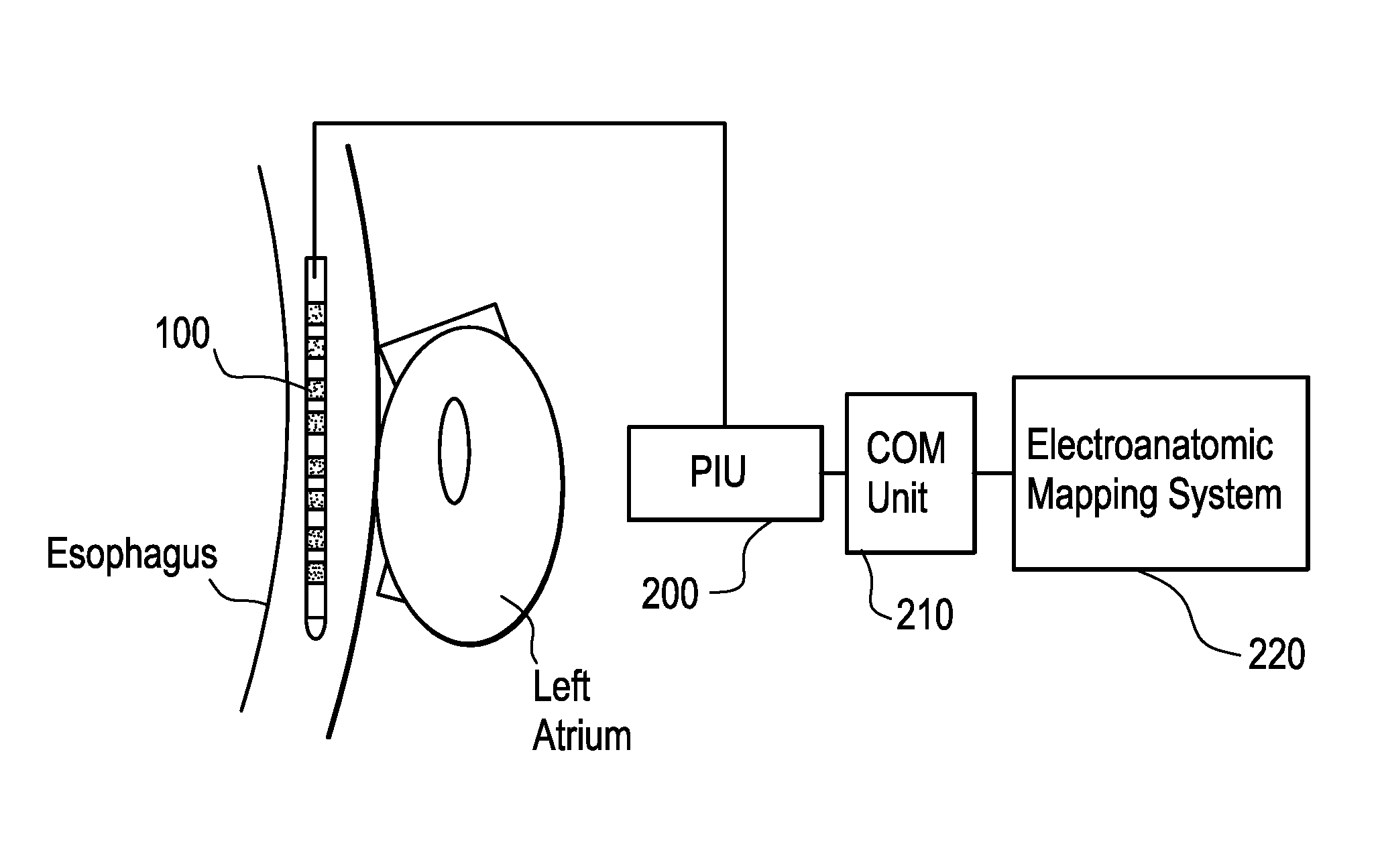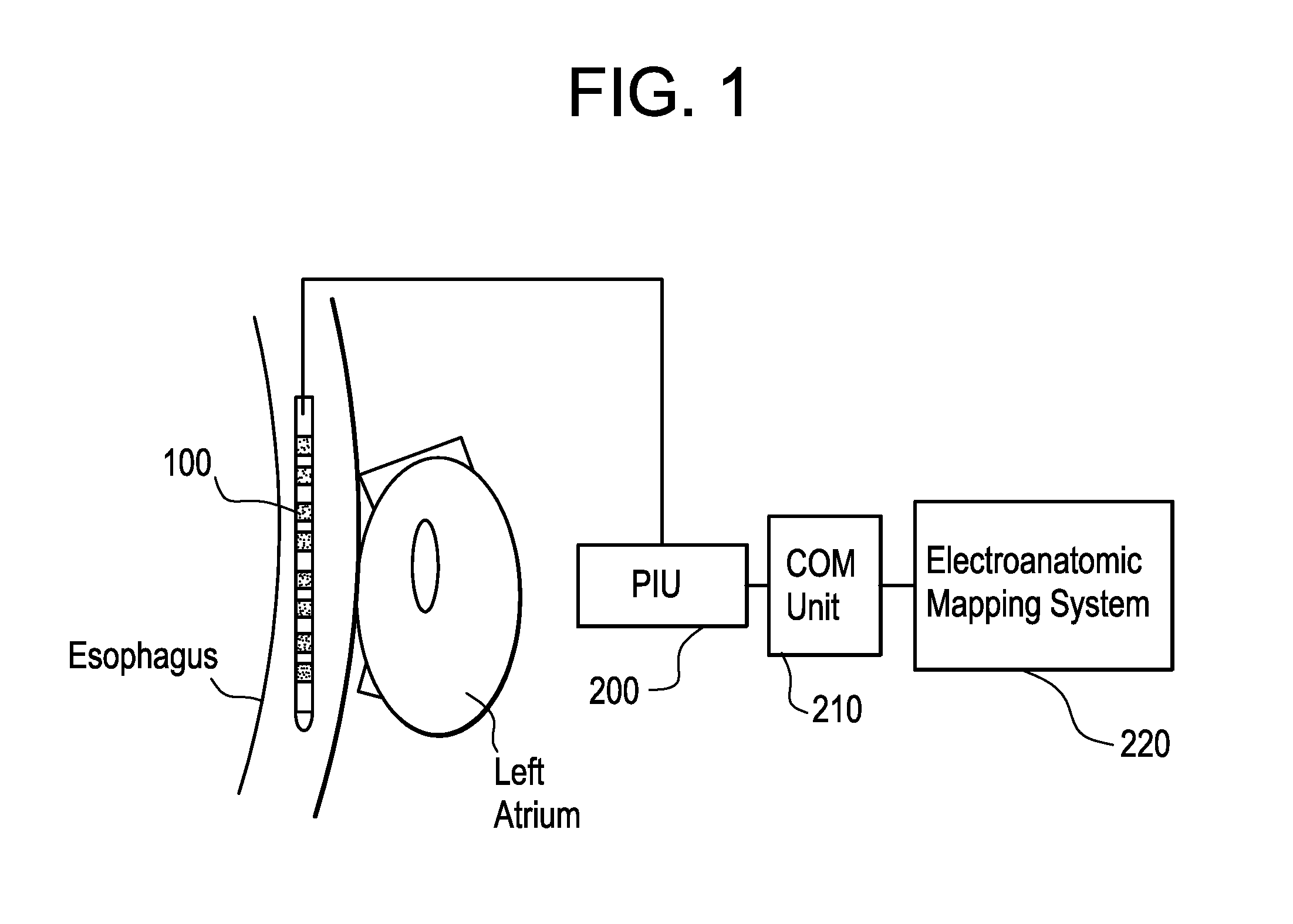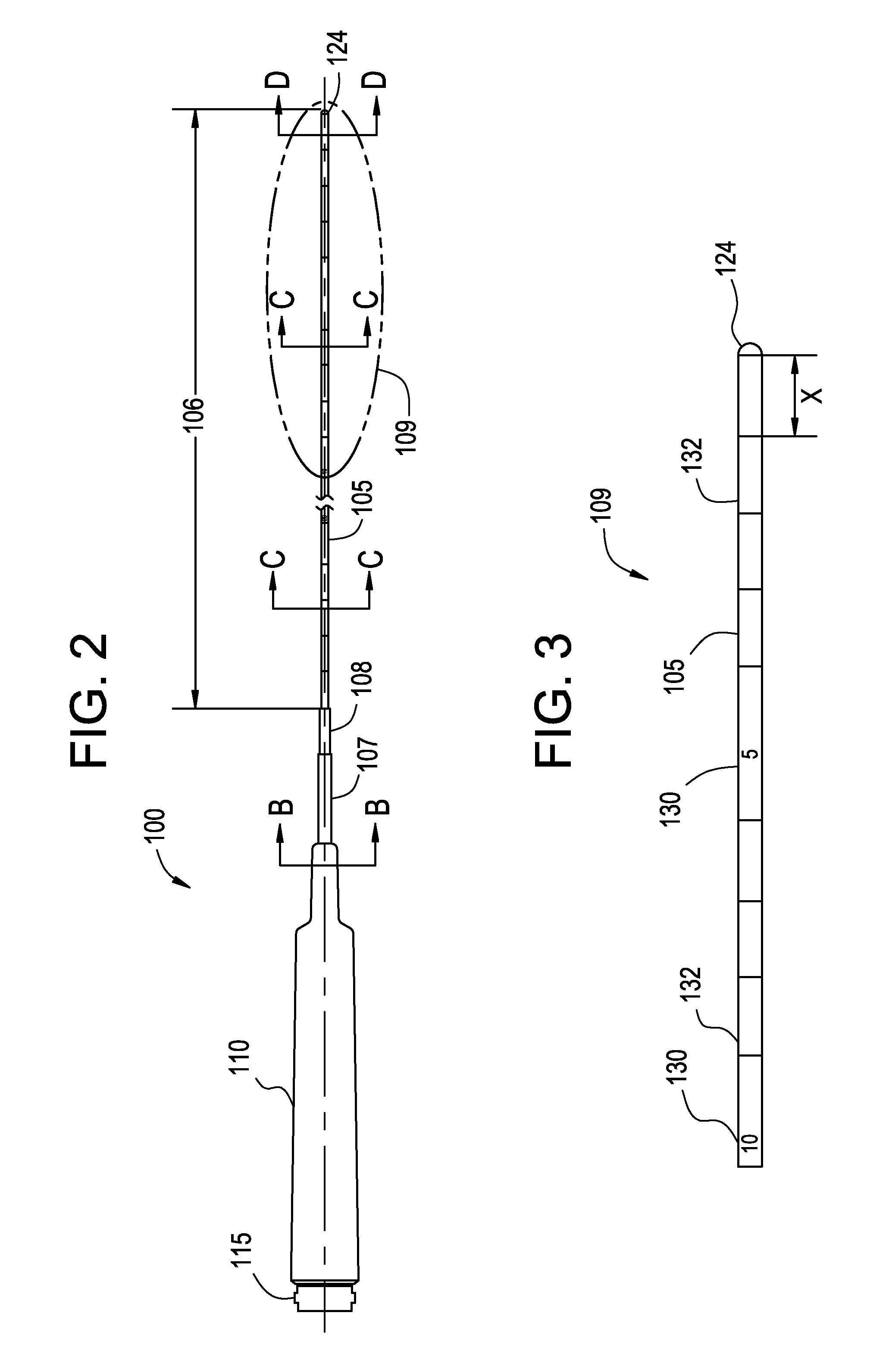Esophageal mapping catheter
a technology of esophageal mapping and catheter, which is applied in the field of esophageal mapping catheter, can solve the problems of high mortality rate, esophageal fistula formation, and damage to the esophagus, and achieve the effects of reducing the risk of energy delivery, and reducing the risk of esophageal fistula formation
- Summary
- Abstract
- Description
- Claims
- Application Information
AI Technical Summary
Benefits of technology
Problems solved by technology
Method used
Image
Examples
Embodiment Construction
[0023]FIG. 1 is a diagram depicting the placement of an esophageal mapping catheter 100 in the esophagus near the left atrium of the heart of a patient. Esophageal mapping catheter 100 is electrically connected to the patient interface unit (PIU) 200 in communication with the communications (COM) unit 210 which is further in communication with the electroanatomic mapping system 220. Electrical signals from the esophageal mapping catheter 100 are thereby received and operated upon by the electroanatomic mapping system 220 as described below.
[0024]The close anatomical relationship of the posterior wall of the left atrium of the heart and the thermosensitive esophagus, creates a potential hazard in catheter ablation procedures. Esophageal mapping catheter 100 is introduced through the patient's nose or throat into the esophagus. Once in the desired position, the device's location sensor is used to “tag” the 3-D position of the esophagus lumen, using the location software executed in th...
PUM
 Login to View More
Login to View More Abstract
Description
Claims
Application Information
 Login to View More
Login to View More - R&D
- Intellectual Property
- Life Sciences
- Materials
- Tech Scout
- Unparalleled Data Quality
- Higher Quality Content
- 60% Fewer Hallucinations
Browse by: Latest US Patents, China's latest patents, Technical Efficacy Thesaurus, Application Domain, Technology Topic, Popular Technical Reports.
© 2025 PatSnap. All rights reserved.Legal|Privacy policy|Modern Slavery Act Transparency Statement|Sitemap|About US| Contact US: help@patsnap.com



